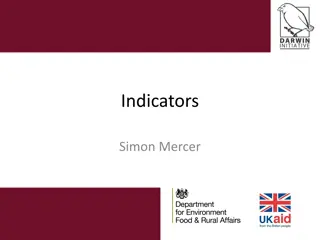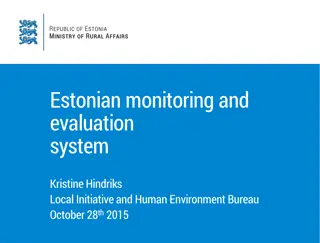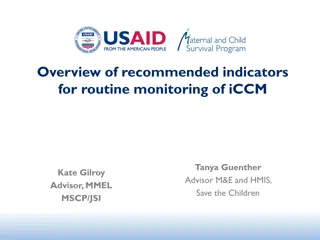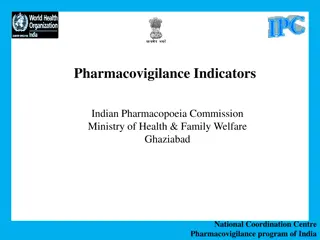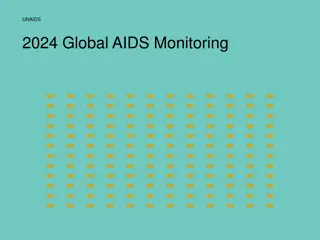Understanding Impact Indicators in Monitoring and Evaluation
Impact indicators play a crucial role in monitoring and evaluating activities, projects, or programs. Direct indicators directly measure results, while indirect indicators are used when direct measures are not feasible. Quantitative indicators are expressed numerically, while qualitative indicators are based on judgments and perceptions. Impact indicators include long-term outcomes and medium-term results, essential for assessing the effectiveness of initiatives.
Download Presentation

Please find below an Image/Link to download the presentation.
The content on the website is provided AS IS for your information and personal use only. It may not be sold, licensed, or shared on other websites without obtaining consent from the author. Download presentation by click this link. If you encounter any issues during the download, it is possible that the publisher has removed the file from their server.
E N D
Presentation Transcript
Lecture 24 & 25: Impact Indicators Centurion University of Technology and Management, Odisha, India
An indicator is a measure that is used to demonstrate changes in a situation, or the progress in, or results of an activity, project, or programme. In other words indicators are measures used to demonstrate changes over time point to the results are essential instruments for monitoring and evaluation DIRECT INDICATORS Direct indicators correspond precisely to results at any performance level. For example, a training programme is meant for increasing irrigation efficiency through effective canal operation plan. In this case the number of field engineers or farmer leaders of various irrigation projects who received this technique from a training are direct measures of output; the number of irrigation projects in which such canal operation plans are implemented is a direct measure of training intervention outcome; and an increase in efficiency confirmed in so many (number or per cent) irrigation projects is a direct measure of training intervention impact. Centurion University of Technology and Management, Odisha, India
INDIRECT INDICATORS Indirect or proxy indicators are used to demonstrate the change or results where direct measures are not feasible. Some objectives, particularly impact objectives, are difficult to monitor. It is often necessary to select indirect or proxy indicators that may be easier for evaluators to measure. For example, the case for more qualitative subjects, like behavioural change, living conditions, good governance, etc. Some objectives of analysis can be measured directly quantitatively, but it is too sensitive to do so, for example level of income or, in the context of an HIV/AIDS intervention, safe sex, etc. In these cases indirect indicators or proxy indicators are used. The use of an indirect indicator can be more cost effective than the use of a direct one. As such, indirect indicators are typical management tools. Generally, managers are not looking for scientifically reliable data but for management information. An indirect indicator may very well represent the right balance between the level of reliability of information and the efforts needed to obtain the data. Centurion University of Technology and Management, Odisha, India
QUANTITATIVE INDICATORS Quantitative indicators are expressed on a percentage or share basis, or, in terms of rate of change or ratio. For example, reduction in infant mortality and maternal mortality are quantitative indicators of health. QUALITATIVE INDICATORS Qualitative indicators can be defined as people s judgments and perceptions about a subject. For example: the number of people, or, per cent of people, that have adopted farm mechanization in a village after receiving training, is a quantitative indicator. The confidence that those people have in farm machinery as instruments of economic improvement is a qualitative indicator. IMPACT INDICATORS Long-term results Measure the quality and quantity of long-term results generated by programme outputs. OUTCOME INDICATORS Medium-term resultsMeasure the intermediate results generated by programme outputs. Centurion University of Technology and Management, Odisha, India


